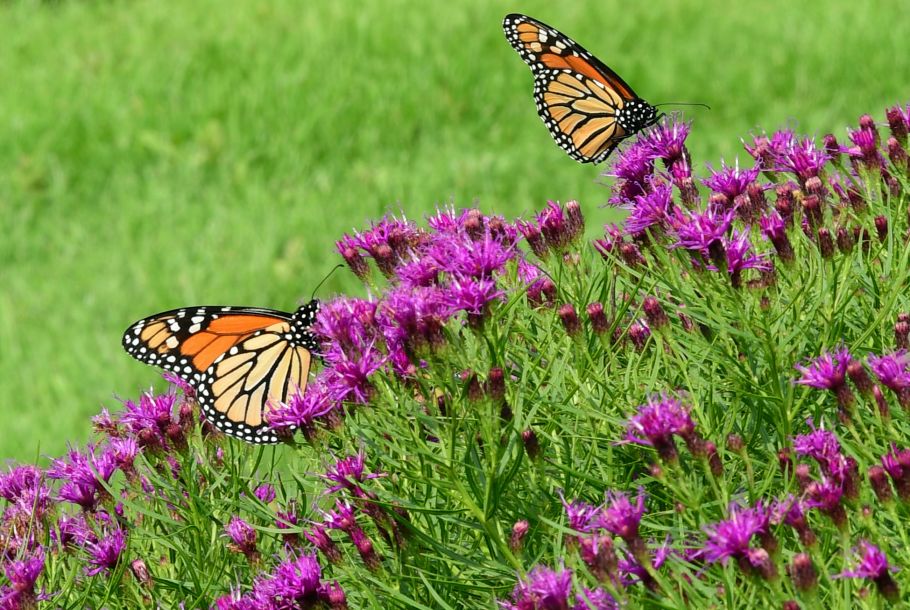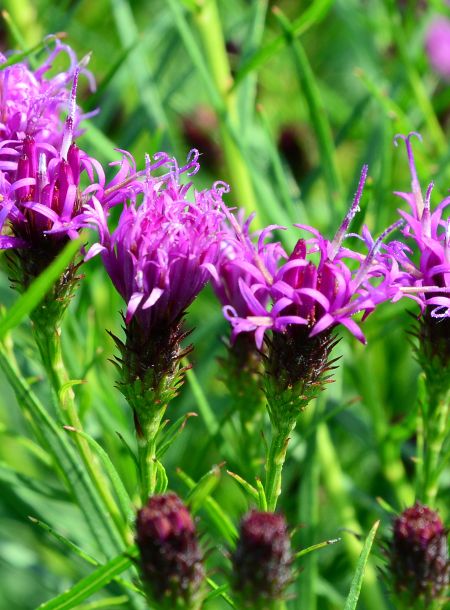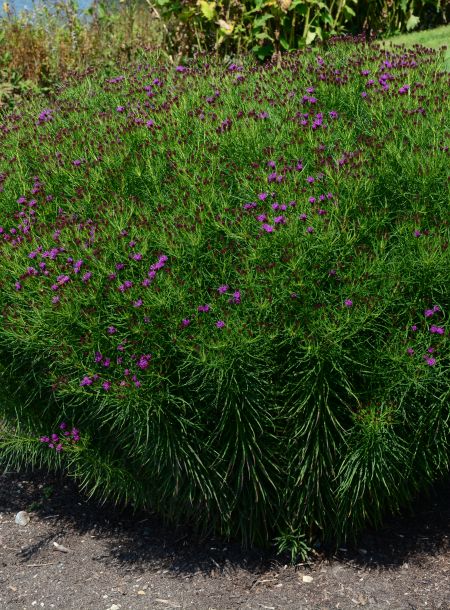Vernonia Summer's End
The best vernonia hybrid yet.
‘Summer’s End’ begins to show interest during the summer months as it grows into its uniform, upright habit while displaying its thin, wispy foliage. It is most attractive in bloom during late summer to early fall when few other perennials are in bloom. 'Summer’s End’ is intermediate in size compared to the two previous releases and is similarly a highly upright cultivar with no stem lodging. Inflorescences are abundant and form a mass of flowers that consistently attract pollinators. ‘Summer’s End’ is drought tolerant and disease resistant and should provide a vibrant, lively presence to any garden late in the growing season under sunny conditions and in well-drained soils. While most ironweed taxa are found in mesic habitats, V. lettermanii, one of the parents of ‘Summer’s End’, can be found in drier rocky uplands. ‘Summer’s End’ appears to have inherited tolerance to both high soil moisture and drought, though plants perform best in well-drained soil with uniform moisture availability. Mulch can be used to preserve moisture in drier soils. Plants also do best in full sun with good air circulation and should not require staking. Winter stems remain upright and rarely break off. Old stems can be pruned away in late spring.
Who Am I?
-
Common Name:Summer's End ironweed
-
Botanical Name:Vernonia 'Summer's End' PP33602
-
Type:Perennial
-
U.S. Native:YES



Cultural Details
TYPE
U.S. NATIVE
-
Light:Full sun
-
Soil:Adaptable to many garden soils.
-
Moisture:Can withstand wet and dry soils.
-
Hardiness Zone4-9
-
Bloom Time:Late summer into fall
-
Bloom Color:Deep purple
-
Size:42" tall by 42" wide
-
Diseases & Pests:Highly resistant to powdery mildew and rust.
What Makes Me Special?
Landscape Use
Origin
A controlled crossing program focused on Vernonia started at the Chicago Botanic Garden in 2010 after the Garden’s plant evaluation program first began evaluating the genus in 2006. ‘Summer’s End’ was derived from a controlled cross between the unpatented c ultivar V. lettermanii ‘Iron Butterfly’ and an unnamed, unpatented V. larseniae accession made in September 2012. This hybrid was selected for release by Jim Ault, Ph.D., in October 2015 based on its desirable habit and superior performance.










